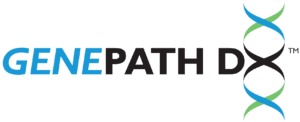Capillary electrophoresis is used to separate amplified DNA for a variety of different molecular applications. Some of these applications include:
Sequencing based technologies:

DNA sequencing is used for a variety of applications including genetic testing, oncology testing (both predictive and therapeutic), infectious disease testing, and microbiome (metagenomic) testing. At GenePath we use the following platforms for DNA sequencing:
- Capillary/Sanger Sequencing:
This gold standard method for reading the bases of DNA up to 1000 nucleotides at a time played an essential role in the sequencing of the human genome. This method is useful for smaller genes or localized hotspots of mutations and has been applied for DNA mutation testing in disorders such as cystic fibrosis and beta thalassaemia.
- Next Generation Sequencing (NGS):
These cutting edge methods extend the sequencing process across millions of reactions in a massively parallel fashion, rather than being restricted to a single or a few DNA fragments. The newly generated fragments of DNA are then reassembled like a giant jigsaw puzzle, thus enabling rapid sequencing of large stretches of DNA – ranging from a group of candidate genes or all coding regions in a genome (exome sequencing) to the entire human genome. This technique enables comprehensive analysis of conditions that involve multiple and/or
GenePath’s proprietary CODE-SEQ platform:
GenePath has developed a novel highly-scalable platform, CODE-SEQ, capable of simultaneously detecting multiple genetic aberrations such as single nucleotide variations (SNVs), copy number variations (CNVs) like deletions and duplications, and changes in methylation patterns at multiple sites across the genome in a single assay. The assay may be used to detect variations in a few sites across a large number of samples (e.g. high throughput testing at the scale of populations for conditions such as Spinal Muscular Atrophy) or a large number of loci in a smaller number of samples (e.g. intellectual disabilities).



